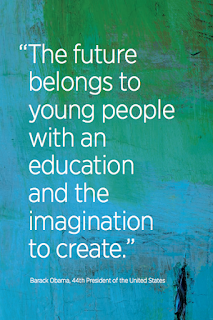Never cease to wonder.
Back in January, I asked Google a question. "If Wonder is gone, what's left to discover?" Read the original article here.
 Of course, things have evolved since July and now the world and internet browsers alike are getting to experience more Pinteresting sites that allow the user to take charge of what type of content and images they search for and include on their dashboard. And the best part is the wildcard space that makes a user feel like they "discovered" something. Clever algorithms and tons of datapoints need not be exposed to the average user, but it turns out that the art of wonder is more like a science.
Of course, things have evolved since July and now the world and internet browsers alike are getting to experience more Pinteresting sites that allow the user to take charge of what type of content and images they search for and include on their dashboard. And the best part is the wildcard space that makes a user feel like they "discovered" something. Clever algorithms and tons of datapoints need not be exposed to the average user, but it turns out that the art of wonder is more like a science.
Then in July, I supplied the answer in the form of another question. In a post titled, "What's your (Pinterest) image strategy?" I laid out an argument for how I've seen a fundamental shift in moving from curated editorial experiences into instant images of gratification that would allow a busy, busy person to do one thing. Wonder. Ahhhhh. That's nice, yes?
 Of course, things have evolved since July and now the world and internet browsers alike are getting to experience more Pinteresting sites that allow the user to take charge of what type of content and images they search for and include on their dashboard. And the best part is the wildcard space that makes a user feel like they "discovered" something. Clever algorithms and tons of datapoints need not be exposed to the average user, but it turns out that the art of wonder is more like a science.
Of course, things have evolved since July and now the world and internet browsers alike are getting to experience more Pinteresting sites that allow the user to take charge of what type of content and images they search for and include on their dashboard. And the best part is the wildcard space that makes a user feel like they "discovered" something. Clever algorithms and tons of datapoints need not be exposed to the average user, but it turns out that the art of wonder is more like a science.
Studying customer behavior is nothing new, especially in the world of retail marketing. For sites that curate commerce just for you or people just like you, like OpenSky, Fancy, Stylmx, Houzz, Stylemint, ShopStyle, StreetEtiquette and even Google's Boutique.com and the super fancy Looklab.com, it's becoming more clear that data can -- and will -- be used by business to project a certain personalized online experience. Rending wonder once again an elusive idea.
That's why Pinterest remains in the lead. Ben Silbermann was thinking less like a salesman and more like a human. He said in a recent article that, "to create a pinboard is to tell the world, here are the beautiful things that make me who I am." And he hit it on the head. People are not dumb, they are just busy. And they want freedom. No one wants to know that Netflix only displays content that has been found among 80% of your circle of influence. No one wants to know that Google shows search results according to, among other things, sites that you are somehow connected to in a ranking of paid advertising. No one wants to know that the average sale resulting from a Pinterest user back to the original image is $180, compared to $80 for Facebook and $70 for Twitter. (Data from RichRelevance. Source is Ben Silbermann's interview in Fast Company, September 2012.) That's not the fun stuff we want to associate with when we post something and tell all our friends about it. We don't care that the data stream is solid, instead we want to think that we are trend-setters and helpful and dare I say, relevant to our own personal audiences like our daughters and our girlfriends. We want to showcase our individualism and we don't want to willingly exist in such a shackled Big Brother environment.
Instead, we want the freedom to Pinterest. Or so we wonder.




Comments
Post a Comment